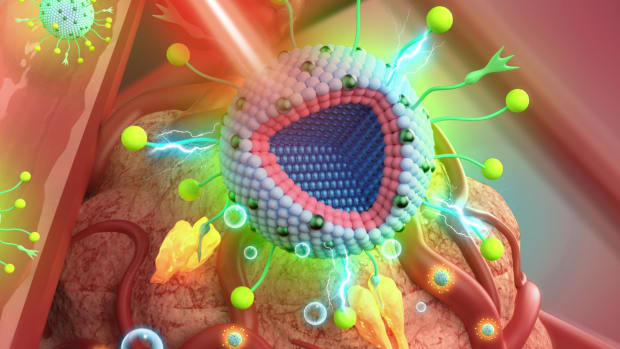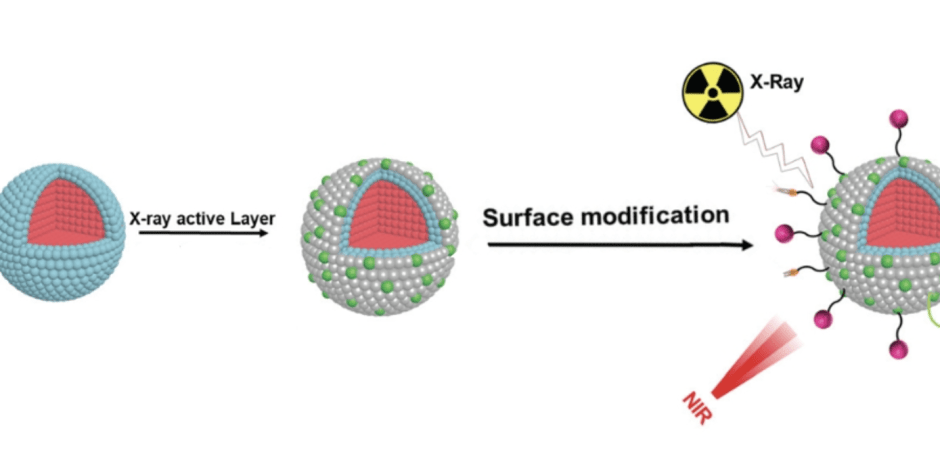
UvA-chemists develop nanoparticles for cancer therapy
Professor Hong Zhang and postdoc Yansong Feng combine two types of therapy to be able to irradiate deeper located tumors. They published the results earlier this year in the Journal of Materials Chemistry C. The first preclinical research in mice has already shown that it works. Now they are looking for medical partners and investors.
Two common treatments for cancer, also have two major drawbacks. Exogenous radiation therapy, the treatment of cancer by means of X-rays, has the great advantage that the X-rays pass right through all tissues. But the disadvantage is that the therapy is not targeted and also affects healthy cells. Photodynamic therapy (PDT), treating cancer by irradiating with light, is especially suitable for skin cancer. Because the light can penetrate only two centimeters at most through the skin and cannot reach deep-seated tumors. Professor Hong Zhang and postdoc Yansong Feng of the Molecular Photonics Research Group (HIMS) combined the benefits into a new therapy via nanoparticles.

The researchers designed nanoparticles that can emit visible light themselves under the influence of X-rays for photodynamic therapy. In addition, when irradiated with near infrared light (NIR)Near infrared light (NIR) with wavelengths between 750 and 1000 nanometers is just next to the visible light spectrum (380 to 800 nanometers) with a small overlap. , they can also emit deep red light, which lights up the location of the tumor and allows doctors to administer a lower dose of X-rays in a more targeted manner. Hong Zhang: ‘The tumor is thus treated simultaneously by radio- and photodynamic therapy, which makes the efficiency higher and ensures fewer side effects.’
The nanoparticles are injected into the bloodstream and are so small that they can move through all tissues. Using a tumor antibody on the outer shell, the particle tracks the tumor. The outer layer is also capable of converting X-rays into visible light. The core, which is separated from the outer layer with a buffer layer, NIR convert to red light for localization. Zhang: ‘NIR has a wavelength of 1000 nanometers, which goes to a shorter wavelength of red light, with a higher energy. So the energy goes up, instead of down, that's why we call it upconversion.' These two processes do not interfere with each other.

'We see an application for cancer now,' Zhang explains, 'but the potential application field of these nanoparticles is far beyond this.' It can also be used as a drug for bacterial or viral infections, simply by using another antibody. ‘The principle is the same.'
No wishful thinking
Nanoparticles for cancer therapy is no wishful thinking; after research in living cells, preclinical research in mice also already shows that it works. The researchers have already applied for a European and international patent for the technique. To take the next step, more data must be obtained from the animal models. 'That's outside our expertise,' Zhang explains. 'We need the help of hospitals for that.'
That's why the researchers are working with network platform Innovation Exchange Amsterdam (IXA) to find investors and medical partners. They have received already responses. Zhang: 'We are happy with that. Through them, we can communicate with the stakeholders. That helps.'

